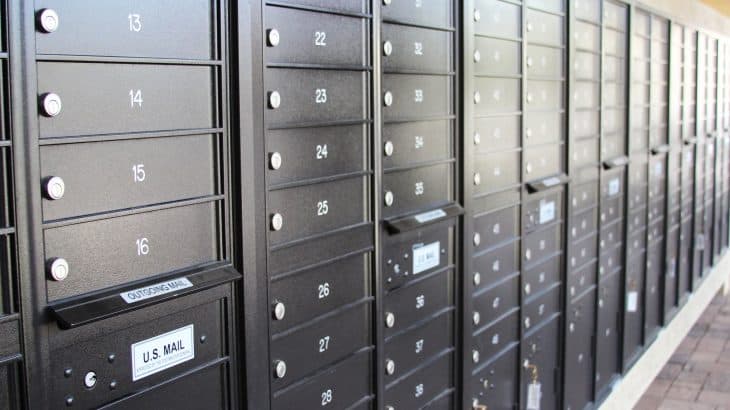In 2006, the U.S. Postal Service released a publication titled, "The United States Postal Service: An American History 1775 – 2006," which chronicles — among many other things — the history of the mailbox.
This USPS Pub100 shares how the Postal Department began requiring customers to maintain a metal mailbox in order to receive free delivery, starting in 1902. As suburbanization exploded in the ‘50s and ‘60s, the Postal Service began using centralized mail delivery systems to further improve the efficiency of mail delivery.
Since its introduction in 1967, centralized mail delivery equipment has come a long way, both in terms of security and the compartment sizes that accommodate the growing size of today’s mail. All mailboxes, whether for individual or multi-family settings, must be built to meet postal specifications, which detail exact sizes, features, and requirements in order to become approved.
The current postal specification (STD-4C) was introduced in 2004, became mandatory in 2006, and subsequently eliminated the use of older mailboxes in new construction. The new 4C mailbox design not only includes convenient parcel lockers, outgoing mail collection, and a design that allows mail to sit flat in the box (as it’s intended); it also includes significantly improved security features. As noted in the postal specification:
While it is not economically feasible to require equipment that will protect receptacles against all potential attacks, this final rule provides equipment that will increase mail security and help to reduce the incidences of theft.
This specification further outlines the rigorous testing requirements that each unit must successfully complete in order to become approved.
- Capacity testing — to meet all specified dimensions
- Cycle testing — each type of door must be capable of opening and closing 10,000 times continuously and correctly, without any failures
- Rain testing — to ensure no appreciable moisture enters the compartments
- Salt fog testing — to ensure the parts will work in coastal regions
- Abrasion testing — sand is blasted at the unit to mimic conditions in desert regions
- Temperature stress testing — placing the unit in extreme temperature settings for extended periods of time and making sure it continues to function
- Structural rigidity testing — pulling on the doors and locks for structure integrity/deformity
- Impact testing — dropping a metal sphere on the unit to ensure no cracking or chipping occurs
- Flammability testing — conducted on all potentially flammable materials
- Security testing — using tools such as screwdrivers, flat plates, knives, pry bars, vise grips, pliers, chisels, and punches to test the unit’s resistance to tampering and unauthorized entry
- Torch testing — conducted on the master door
- Pry testing — around all types of doors and vulnerable locations
To ensure Florence mailboxes pass the rigorous USPS testing the first time, we are proud in many cases to exceed the testing requirements as outlined; thereby providing you with the best product possible.
Overall, this thorough approval process ensures that the mailboxes used today are able to protect your mail and accommodate the rising need for package management, which is why it is highly recommended that old centralized mail delivery systems are replaced with updated models.
If you’re in need of new centralized mail delivery equipment — whether for replacement or new construction — explore our 4C product line or contact us directly to get started.

